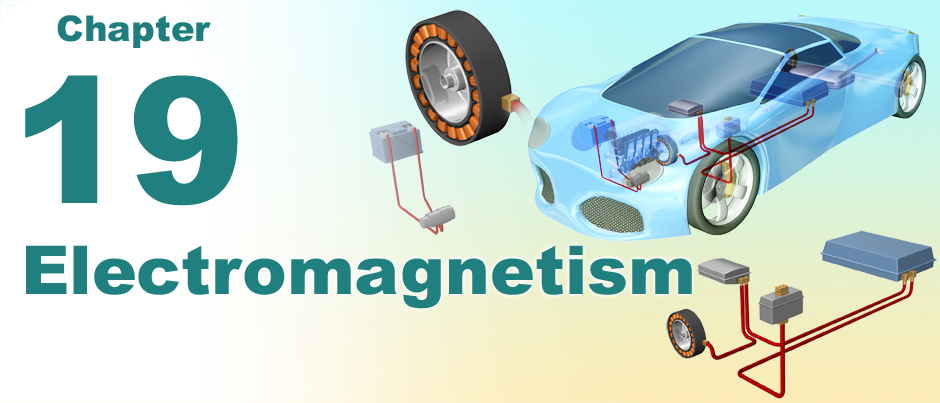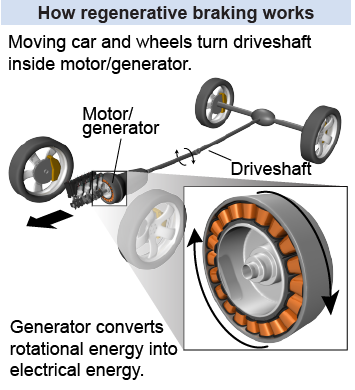 |
According to the U.S. Department of Energy, in 2009 American drivers used 24 trillion megajoules of energy to drive cars and trucks. This enormous amount of energy is equivalent to the total output of 760 major power plants. Yet, by the laws of physics, all of the energy is ultimately wasted! 
|
Think about driving a car. You run the engine to convert chemical energy in gasoline into kinetic energy of the moving car. When you stop, the brakes convert all that kinetic energy into waste heat and wear. Of course, you also get where you are going, so that counts for something! Can some of this wasted energy be recovered? 
|
 One of the key features of electric and hybrid vehicles is that they can recover some of the car’s kinetic energy while the car is slowing down or braking. During the regenerative braking process, some of the car’s kinetic energy is converted into electrical energy and then stored in batteries for later use. A car can be driven an additional distance using this stored electrical energy, thereby delivering more driving miles from the same gallon of gasoline.
One of the key features of electric and hybrid vehicles is that they can recover some of the car’s kinetic energy while the car is slowing down or braking. During the regenerative braking process, some of the car’s kinetic energy is converted into electrical energy and then stored in batteries for later use. A car can be driven an additional distance using this stored electrical energy, thereby delivering more driving miles from the same gallon of gasoline.
Electric and hybrid cars have an electric motor that can drive the car by converting electricity into rotational motion of the driveshaft. When the car is slowing down, the electric motor runs in reverse and becomes an electric generator. The driveshaft continues to turn as a result of the car’s forward motion, thereby acting as a turbine inside the generator. The generator converts this rotational motion into electricity and partially recharges the battery. 
|
The electric motor and generator are based on the connection between electricity and magnetism—called electromagnetism!—which you will learn about in this chapter. The magnetic force between two magnets and the electric force between two charged objects—described in Coulomb’s law—are two aspects of a single electromagnetic force. Electromagnetism is the physics behind many technologies all around you, such as the loudspeaker, microphone, computer memory, and the cathode ray tube (or old-style television). 
|
| |
|

